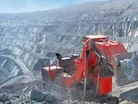China Orders Vale Closures and Iron Ore Prices Increase

As Chinese steel production frequency is at its highest on record, the industry is also faced with less availability of Iron Ore. Price of the material continues to rise as the industry experiences a deficit which is already causing issues. According to Fastmarkets MB, Iron Ore imports into Northern China are up by 0.7%, reaching US$220.77 per tonne.
Why Such A High Demand For Iron Ore?
Chinese economic growth and the requirement for continued steel supply affect the demand. Despite being forced to reduce production capacity - due to environmental implications - there still remains a very high output if you consider the number of resources readily available. Covid-19 also caused a significant amount of disruption to the supply chain as Brazilian exports were reduced due to the spread of the virus or social distancing measures.
What Issues Does Non-Coal Mining Face?
The international mining company, Vale, halted production at its Timbopeba mine in Brazil, as well as part of its Alegria mine after it was ordered to evacuate an area near Xingu Dam in the state of Minas Gerais. These closures are expected to reduce the company’s output by 40,000 tonnes per day. There are enough resources available to support the Chinese demand, but this comes at a higher price.
As a result of mine closures - reducing the overall capacity - Vale is looking to improve the efficiency of its processes by potentially implementing remote-controlled trains to improve the flow of production near its tailings dam. On top of this, Chinese authorities gave orders to close all non-coal underground mines in Shanxi province, China, for inspection following a flood in an Iron Ore mine in Daixian. These issues result in a temporary iron ore supply gap, of which Timbopeba and Alegria will be short by 14.6 million tonnes, and Shanxi province will lose out on 14.97 million tonnes of concentrate over the next year.
Navigate Commodities, a data analytics company, has provided a comment based on its findings. “We estimate this latest rally will be sustained for the next few weeks given that it is fundamentally driven by the temporary removal of 30 million tonnes of annual iron ore supply.”
For more mining industry insights, check out Mining Global magazine.
Featured Articles
A fleet of Huaneng Ruichi autonomous electric mining trucks have been deployed in China, supported by Huawei's Cloud Services and 5G-Advanced network
Rio Tinto completed its US$6.7bn acquisition of Arcadium Lithium, making it a key company in raw materials mining for batteries in the energy transition
Intel first began to work towards responsibly sourced conflict minerals from the Democratic Republic of Congo and adjoining countries about 12 years

